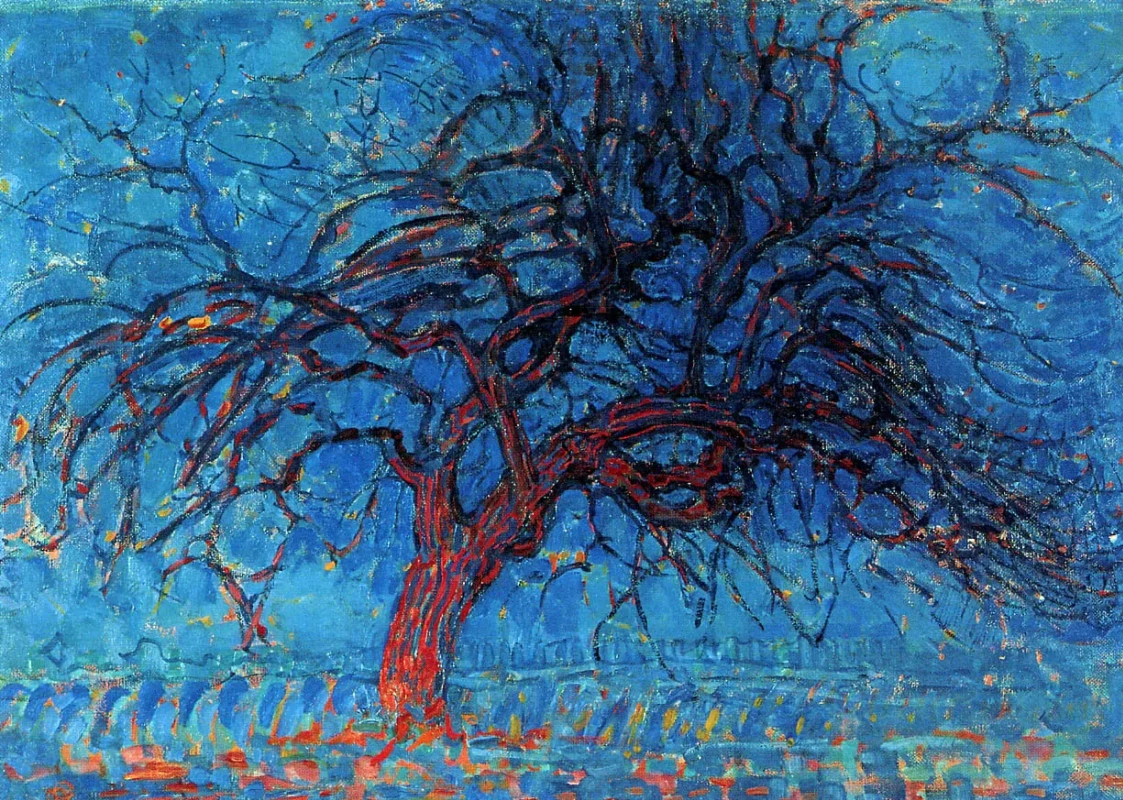log in
Enter site
Login to use Arthive functionality to the maximum
Mahogany
Piet Mondrian • Pintura, 1910, 70×90 cm


















Descripción del cuadro «Mahogany»
Picture "Mahogany" the first of the famous series of works by Mondrian, in the center of each of which is a tree. This series most clearly demonstrates the transition in the artist's work from figurative painting to abstract. And all the paintings depict, apparently, one and the same object. The second work in the series ("Grey tree", 1912) written exclusively by those shades that Mondrian would later be called "non-colors" black, white and grey. On the third canvas ("Blooming Apple tree", 1912) additional shades just guessed, here again reigns grey.
In the "Red tree" Mondrian have gradually deviated from the usual figurative painting, using mostly the colors that will become the basis for all his abstract paintings – red and blue with small patches of yellow. In this work the influence of Fauvism and impressionism. Theorists of painting see here a reference to van Gogh's paintings, especially the olive trees (1, 2, 3) and cypress (1, 2, 3), with special emphasis on similar writing style and simplified colors.
In addition, the "mahogany" is often associated with another important work by the artist that capture the eye and imagination defiantly solid colors "A mill in a Sunny color"that was written in the same year.
"Mahogany" became a kind of starting point in the work of Mondrian, marking a new stage in its evolution. It seems, from that moment, the artist is no longer interested in the portrayal of objects as such, and it completely focuses on color. Since this painting, Mondrian is moving away from the halftones and little attention is drawn to the fact how naturalistic colors on his canvases, as they are inherent in those objects or landscapes that he depicts. Ironically, it is this kind of rebellion for the first time enabled the artist to declare himself independent discoverer is able to create his own style of painting.
Author: Eugene Sidelnikov
In the "Red tree" Mondrian have gradually deviated from the usual figurative painting, using mostly the colors that will become the basis for all his abstract paintings – red and blue with small patches of yellow. In this work the influence of Fauvism and impressionism. Theorists of painting see here a reference to van Gogh's paintings, especially the olive trees (1, 2, 3) and cypress (1, 2, 3), with special emphasis on similar writing style and simplified colors.
In addition, the "mahogany" is often associated with another important work by the artist that capture the eye and imagination defiantly solid colors "A mill in a Sunny color"that was written in the same year.
"Mahogany" became a kind of starting point in the work of Mondrian, marking a new stage in its evolution. It seems, from that moment, the artist is no longer interested in the portrayal of objects as such, and it completely focuses on color. Since this painting, Mondrian is moving away from the halftones and little attention is drawn to the fact how naturalistic colors on his canvases, as they are inherent in those objects or landscapes that he depicts. Ironically, it is this kind of rebellion for the first time enabled the artist to declare himself independent discoverer is able to create his own style of painting.
Author: Eugene Sidelnikov




